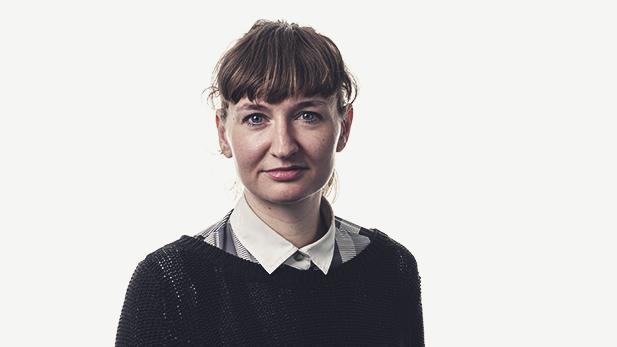Citizens help public sector managers find a shortcut to innovation for the elderly

Interview with Justine Grønbæk Pors
Do you remember when, and where, you first got the idea for this research project?
After the defence of my PhD on management in the Danish school system, I was interested in continuing to research management within the welfare sector. Together with Local Government Denmark (LGDK) and two specific local governments, we were successful in getting support from a welfare fund. The project grew out of a long-term partnership between the Department of Management, Politics and Philosophy (MPP) and LGDK. We have, over the years, built up a mutual trust, which is vital for partnerships between research and practice to succeed. We see each other's differences as interesting, and we are curious about each other's ways of formulating issues. It was a good prerequisite for a close cooperation.
What inspired you to do this specific research?
Our inter-disciplinary project addresses the dilemmas that welfare managers within the elderly sector face. In the last 20 years, the elderly sector has been characterised by a fragmentation into smaller units that take care of different services. Citizens felt that they were being thrown back and forth within the system. When we started the research collaboration, the municipalities had ambitions to re-think what care and nursing actually meant. From defining core elderly services as tasks such as nursing and cleaning etc., the municipalities increasingly began to change their focus of the core function to be about quality of life, as experienced by the individual elderly person. Quality of life for each individual turned out to be very different. One citizen’s greatest wish was to attend her grandchild’s confirmation. This required that she could manage stairs. Quality of life for her therefore meant physical rehabilitation. For others, quality of life meant the general ability to manage for themselves, for example, to be able to vacuum. However, for managers it is difficult to supervise your employees working in the elderly sector according to a core output such as quality of life, which is hard to measure. What are the factors of care that actually create quality of life? What opportunities are there to organise things in a smarter way? How do the conditions for management change when, as a manger, you are stretched between five innovation projects at the same time? I think it is very interesting that the welfare state in recent years has put itself quite radically at stake when it re-interprets what welfare and core services should be in the first place, and it dissolves the boundaries between organisations and those between the state and the citizen.
Which developments gave rise to the research and opened doors for the project?
With an ageing population, fewer resources, and fewer hands to tackle future tasks, there was an increasing recognition that we have to think innovatively about working with the elderly. The numbers simply did not add up and this is why money was put aside for this area in the national budget. Just like other areas of welfare, elderly care must be done better and more cheaply by, for example, finding more resources for citizens to take more responsibility for their own and others’ quality of life. There is also a great openness within the municipalities to try new methods and finance innovative projects. For example, a nursing home is being built in Kolding municipality that reflects society in that it will also include apartments for families with children. The idea is to attempt to increase the elderly people’s quality of life and, at the same time, make elderly care cheaper by asking volunteers, in this case the families with children, to lend a hand. But is this the best solution?
What are the conclusions of your research?
The project is about management development. In cooperation with the participating municipalities, we have developed a specific method that managers can use to organise welfare, based on interest in the citizens. We help managers make small anthropological studies, focus-group interviews, and surveys about citizens’ journeys through the public systems. A chef, for example, investigated how a meal was actually being prepared at a care home where her meal plans were being used. For many years, she had optimised the quality of the meal plans (the right fat content, protein, and so on) but after the study she became interested in what a meal actually means, and what the elderly people wanted to eat on a daily basis and whether the caregivers had the organisational conditions to fulfil these wishes. This meant she could “hack in” and adjust her services to better match the residents’ wishes and the nursing home’s options to prepare a nice meal. However, at the same time, we have to conclude that the elderly sector’s search for more innovation puts decentralised managers in some fierce dilemmas. They move in a highly regulated sector, but are expected to almost magically do things better and more cheaply by confronting assumptions, re-inventing their relationships with citizens and finding small pockets of opportunities within particular interpretations of legislation in this area.
Who does the research affect?
Specifically, the two municipalities, Aalborg and Holbæk, and 20 managers have been affected by our research. In cooperation, we have equipped them with new methods and management tools that they can use. In addition, Danes live in a welfare society with an ageing population and we will not be able to afford the same welfare that we have today. We are therefore forced to innovate but while we do this, we are experimenting with the most fundamental principals in a democracy – that everyone has the right to welfare. Suddenly, an individual social- and healthcare-assistant is assessing if a citizen is entitled to welfare or not. The issue therefore affects us all: managers, professionals and citizens.

Photo: Shutterstock
How is the conclusion socially relevant?
Overall in the public sector, the answer to almost anything is ‘innovation’. But innovation cannot be conceived from the top down in the public sector hierarchy. Our research was among the first to move within this field. Now there is an explosion of these types of projects. Many municipalities are experimenting with how to better and more cheaply organise welfare by teaching the elderly to increasingly look after themselves. There is quite a lot of push for this at the moment.
What is the strongest example that the research has made a positive difference to the companies or organisations involved?
The project helped to create cross-disciplinary management in the elderly sector. In this process, managers took it very seriously to be engaged with and interested in the citizens. An incredible number of units have to work together for even trivial things to function well, such as a discharge from a hospital and then the subsequent required home-nursing, physical rehabilitation, assistive devices and medication. And because every unit speaks their own professional language and uses their own specific methods and systems to communicate, problems often arise. In this project, managers have been able to lift their gaze from their own organisation and take responsibility for the entire process and for each citizen.
Aalborg municipality has subsequently used the project experience to reorganise their entire elderly sector. One of the goals is to get a better transition between the different units of the public service, where the manager coordinates from a multidisciplinary objective, together with the citizen. People are working together across units in new ways, so the coordination between all the units that must interact in a differentiated municipal organisation is not constantly the individual citizen’s problem.
Has the research made a difference in other ways for companies, organisations, society?
We have tested a new partnership model for the cooperation between research and practice. LGDK has subsequently used the model in other projects. The special thing about it is that it continually qualifies the practice that you go into as a researcher. And, as a researcher, you are not bound to a fixed output from the start but can take the project in the direction that is the most promising. So it doesn’t take three years before the research project reaches a result. It’s a huge advantage in the public sector where things change quite quickly that we have continually been able to adjust the project. For instance, the new definition of elderly sector core tasks was not originally part of the project description, but it became a strong theme during the project.
What new perspectives does the research have – what socially relevant issues has it raised that have been addressed since publication, or should be addressed by you or other researchers?
Can we continue to improve our welfare society by finding more potential in our citizens? This is the central question that the research project leaves. Are we witnessing a welfare state that, in its quest to find new opportunities where impossibilities are piling up, is systematically removing its own capabilities to lead? Some innovation projects are in danger of throwing the public sector bureaucracy’s best virtues out with the bath water. We are certainly seeing some pretty radical experiments playing with quite fundamental values, such as legal rights and the possibility of holding someone accountable. It is often the de-centralised managers who have to navigate these intense dilemmas. They have to be innovative but also manage the subtle balance between innovation and fundamental rights, such as the individual citizen's legal rights. The future challenge is to find out how renewal and innovation can work together with the core concepts of predictability and the rule of law.